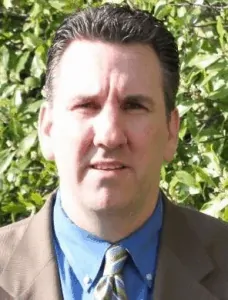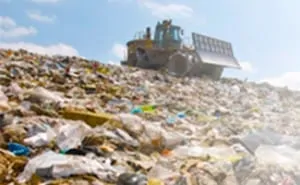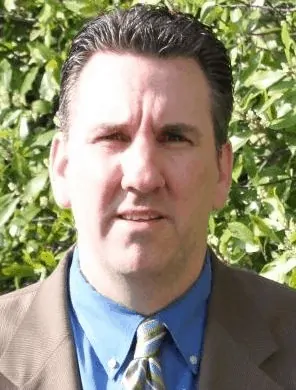

Technical bulletins provide salient information in a condensed format. These summaries are useful to understand and start to plan for potential impacts to your business. Both bulletins posted today include deadlines and additional resources with contact information to help answer your questions. The two bulletins posted today are as follows:
Clicking the title of each Technical Bulletin will take you to the full text. Each Bulletin may be shared, emailed, or printed.
About Pat Sullivan:

Pat Sullivan, BCES, CPP, REPA, is a Senior Vice President of SCS Engineers and our National Expert on the Landfill Clean Air Act and the New Source Performance Standard (NSPS). Mr. Sullivan has over 25 years of environmental engineering experience, specializing in solid and hazardous waste-related issues.
Click on Pat’s name to see his full qualifications and experience.
The U.S. Environmental Protection Agency (EPA) issued a final rule on September 29, 2015, seeking to further control emissions of hazardous air pollutants (HAPs) and volatile organic compounds (VOCs) from petroleum refineries.
This action finalizes the residual risk and technology review conducted for the petroleum refinery source category regulated under the National Emission Standards for Hazardous Air Pollutants (NESHAP; 40 CFR Part 63, Subpart UUU), including the refinery Maximum Achievable Control Technology Standard (MACT) 1 and Refinery MACT 2.
Click here to read the Technical Bulletin

SCS Engineers has also submitted comments pertaining to the proposed EG and compliance revisions to the EPA. SCS leaders are involved in many outreach activities to help landfill owners and operators understand and prepare for the impact of the proposed modifications.
Contact SCS Engineers at for more information, or visit the SCS website for upcoming events and pertinent resources.
Reprint

The SWANA Landfill Gas and Biogas Division is very busy right now with several important efforts. On the Rules and Regulations front, the U.S. EPA has promulgated two draft landfill gas (LFG) rules that were published in the Federal Register on August 27, 2015. These include a draft Emission Guideline (EG) rule and a supplemental draft New Source Performance Standards (NSPS) rule.
The proposed EG rule affects “existing” landfill sites (i.e., landfills that have not been expanded and were not newly constructed after July 17, 2014). The NSPS rule is a supplemental proposal that affects “new” landfill sites (landfills that are new or were expanded in capacity after July 17, 2014). Comments on both are due by October 26, 2015. Final issuance of both rules is expected in the first quarter of 2016. The Division Rules and Regulation and Advocacy committees are working together to develop SWANA’s industry comments on the rules.
The major focus of both rules is the current 50 Mg/year of non-methane organic compounds (NMOCs) emission threshold, which triggers the installation of a LFG collection and control system (GCCS). In the proposed rules, that threshold will be lowered to 34 Mg/year for all landfills except existing, closed sites. This appears to be the centerpiece of the U.S. EPA’s plan to create additional NMOC and methane reductions from landfills. With a lowered NMOC threshold, some landfills, particularly those that have been too small to trigger the installation of a GCCS, will be required to install them.
Other key components of the draft EG rule, which are likely to be similar in the NSPS rule, include the following:
The draft EG rule also provides clarifications on several existing rule topics, as well as topics where U.S. EPA decided not to include such items in the rule:
During the comment period, the EPA also is looking for public comment on:
The EPA will have the ability to add more provisions to the final version of the rule based on the information submitted as a part of these information requests. This means the industry must make a strong case to the EPA to get them to consider our opinions on these issues.
Comments on this article should be addressed to Patrick S. Sullivan, Senior Vice President, SCS Engineers, at 916-361-1297 or

If you missed this presentation, NWRA has granted SCS permission to post the slide show on our website. We welcome everyone to view the slide show and thank the NWRA for sponsoring the webinar. Webinar presenters include:
For more information and answers to your questions please contact Pat Sullivan, SCS Engineers or the webinar presenters.
Click for information about NSPS/NESHAP Compliance Services.
The Technical Bulletin is a synopsis of the NSPS rule supplement and the draft EG rule intended by the EPA to strengthen the previously published rule on July 17, 2014, and earlier proposals. The rules frame the requirements and responsibilities created for Municipal Solid Waste Landfills and the Waste and Recycling Industry.
The EPA has provided a 60-day time period from the publication date of August 27, 2015, for industry responses to the draft rules. Responding is critical to properly frame EPA’s rulemaking process; the EPA may add provisions to the final version of the rule based on information received during the comment period.
The Solid Waste Association of North America (SWANA) and the National Waste and Recycling Association (NW&RA) are reviewing the NSPS and EG rule in detail and will be commenting within the prescribed 60-day window.
This SCS Engineers Technical Bulletin, providing a more detailed summary of the rules, is available on the SCS website by clicking here. Share the link or this blog to help speed the efforts to gather information for the Waste and Recycling Industry response.
Contact Pat Sullivan, SCS Engineers, Senior Vice President to request additional information.
Pat Sullivan, REPA, CPP
National Expert – Landfill Clean Air Act; NSPS
SCS Engineers, Senior Vice President
(916) 361-1297